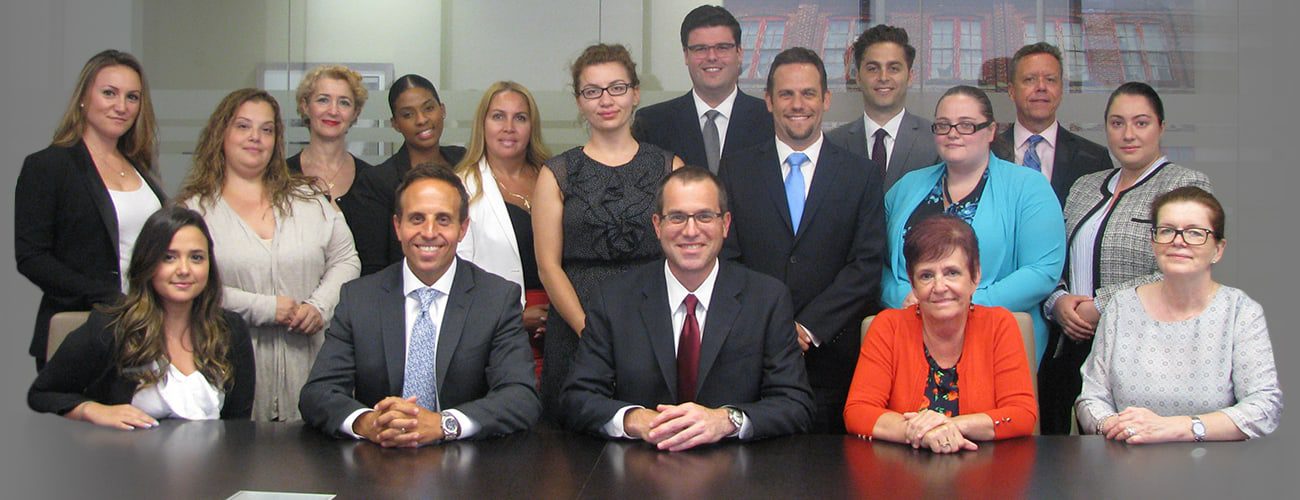Have you been injured in a labor accident? It is imperative that you know your rights and understand that you may have a third-party claim in addition to your workers compensation claim. The team at Leav & Steinberg is equipped with seasoned and zealous advocates prepared to fight for your rights and ensure the most favorable disposition.
There are two prevailing Labor Law sections which impose strict liability upon contractors and owners if protection for workers are insufficient. The legislative intent behind the enactment of these crucial statutes is to emphasize the importance of safety work practices and enforce accountability for negligence in the workplace by holding these owners and contractors responsible.
The partner managing the Labor Law Department at the firm is Daniela Henriques. She has successfully argued before the appellate division on the issue of the Labor Law and its practical application to many cases here at Leav & Steinberg. Her cases have continued to be cited by other lawyers and firms in New York City.
One such case was Luis Torres v. Monroe College.
- 240. Scaffolding and other devices for use of employees
New York Labor Law “scaffolding” provision, imposing absolute and nondelegable duty on contractors and owners to provide appropriate scaffolding and other safety measures where workers are engaged in erection, demolition, repairing, altering, painting, cleaning or pointing of building or structure and absolute liability if worker is injured because such protections are insufficient, applies only to elevation-related hazards and does not permit recovery for injuries resulting from other types of hazards even if proximately caused by absence of adequate scaffold or other required safety device. Dos Santos v. Terrace Place Realty, Inc., 2006, 433 F.Supp.2d 326.
Scaffold Law is directed at elevation-related hazards, and injuries resulting from other types of hazards are not compensable under Scaffold Law even if proximately caused by absence of required safety device. Carpio v. Tishman Const. Corp. of New York (1 Dept. 1997) 240 A.D.2d 234, 658 N.Y.S.2d 919.
Special hazards encompassed by provision of Labor Law requiring use of scaffolding, hoists and other protective devices are limited to such specific gravity-related accidents as falling from height or being struck by falling object that was improperly hoisted or inadequately secured. Vornfett v. Port Authority of New York and New Jersey (1 Dept. 1997) 238 A.D.2d 134, 656 N.Y.S.2d 14, corrected on reargument.
- 241 Construction, excavation and demolition work
Regulation providing that no lift or fork truck be used on any surface that is so uneven as to make upsetting likely mandated a distinct standard of conduct, rather than a general reiteration of common-law principles, and therefore could serve as basis for Labor Law claim for violation of a regulation promulgated by the Commissioner of Labor that sets forth a specific standard of conduct. Oakes v. Wal-Mart Real Estate Business Trust (3 Dept. 2012) 99 A.D.3d 31, 948 N.Y.S.2d 748.
Industrial Code provision requiring that parts of floors, platforms, and similar areas where persons worked or passed be kept free from accumulations of dirt and debris, scattered tools and materials, and sharp projections was sufficiently specific, positive command to furnish basis for Labor Law liability for injuries allegedly sustained by worker who tripped and fell over brick under plastic covering newly-poured concrete while delivering materials for use at construction site. White v. Village of Port Chester (2 Dept. 2012) 92 A.D.3d 872, 940 N.Y.S.2d 94.
Industrial Code provision requiring workers to wear protective eyewear under circumstances in which they were engaged in work that could endanger their eyes was specific enough to furnish basis for Labor Law liability for eye injuries iron worker sustained when lanyard hook snapped back from basket lift and struck him in eye. Buckley v. Triborough Bridge and Tunnel Authority (1 Dept. 2012) 91 A.D.3d 508, 937 N.Y.S.2d 25. Negligence 1204(5)
Scissor lift, from which truss fell onto worker, was “aerial basket,” excepted from Building Code provision governing material hoisting equipment, for purposes of Labor Law liability. Karcz v. Klewin Bldg. Co., Inc. (4 Dept. 2011) 85 A.D.3d 1649, 926 N.Y.S.2d 227.Negligence









